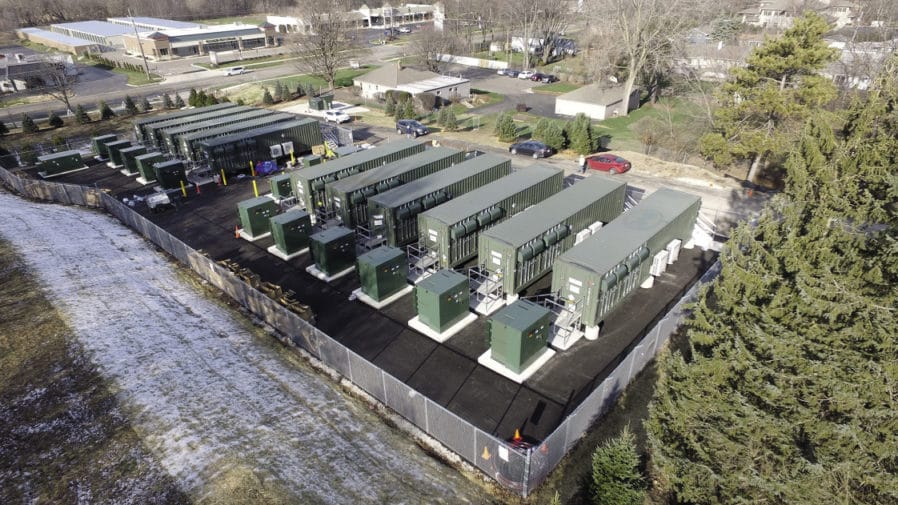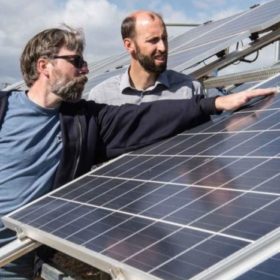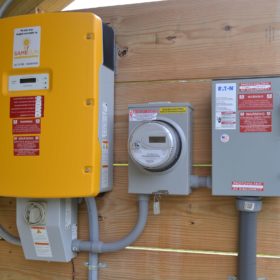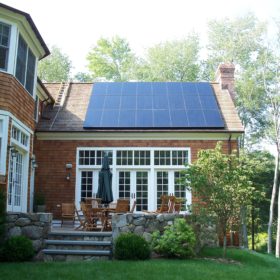In late March, Massachusetts’ Governor Charlie Baker’s office filed its finalized Clean Peak Standard (CPS) regulations with state legislators. The regulation is expected to take hold in June, following a 30-day review period.
The policy identifies peak four-hour time windows in each season and delivers credits for renewable energy delivered to the grid during those hours. The credits are scaled by need at time of delivery, with those peak times having a higher credit multiplier than other times. Pending anything drastic, Massachusetts will become the first state to institute such a policy.
The standard has been lauded as a model of providing reliability and predictability in delivering electricity across areas with already high levels of renewable penetration.
Massachusetts, however, is not the only state with high renewable penetration and a duck curve to combat, so pv magazine sat down, virtually, with Roger Lin, VP of marketing with NEC Energy Solutions to discuss the national ramifications of the clean peak and if similar policy could drive renewable and battery adoption in areas that have not seen renewable penetration.
“I see it as a no-compromise solution to larger and larger nodes of clean energy, without sacrificing the way we like to use electricity… We think it will definitely add a bit of certainty to revenue streams that energy storage can provide, while also accomplishing the larger goal of having clean energy delivered when it’s needed, not just when it’s generated.”
Lin also shared that while the CPS is important for the capacity of storage it is anticipated to bring to Massachusetts, the real impact of the regulation is the framework that it sets for states in a similar position.
“In the near term, the demonstration of the effectiveness of the CPS as a regulation [is that] it provides a lot of information to states that are dealing with high amounts of intricate and variable renewables to put in regulations in a similar vein… Just look to the states that have the highest amounts of installed solar. You’ll see that [solar] basically creates that duck curve. In parts of the Southwest, those states with great solar resources and great penetration of solar could really benefit from something like a clean peak.”
In the last decade, the United States saw a boom in solar adoption, triggered by improving economics and policy on the state and federal levels incentivizing utilities to clean up their power mix.
A boom in storage
The United States seems poised for a boom in storage. Not only does Lin believe that widespread adoption of Clean Peak-esque policies will lead to booms in other states, but that, in an altered form, the regulation could be used as a model to drive overall renewable adoption in low-penetration areas.
“Policy like CPS will lead to faster adoptions of storage and faster realization of delivering clean power when it’s needed. I think that’s a fundamental transformation that has to happen to our power sector and our electricity grid, so that we can meet some of the standards that these states are putting forth.”
One aspect of CPS that directs the policy towards states with already high penetration of renewables is the provision that utilities’ annual clean peak credits must match a given percent of electricity delivered that year, starting at 1.5% and growing annually. This is an aspect of the original that would have to be modified for low-penetration states.
“The CPS enables…the electricity grid to accommodate generation that is variable, intermittent and not controllable. As you create that flexible backbone, you’re creating the structure to allow more clean energy to be adopted. That’s where the storage or some other flexibility-providing asset gets installed next to new [solar] generation. That’s one of the advantages, one of the beauties, of advanced battery storage: you can put it next to generation if you want, you can put it in the grid if you want, you can put it by the load if you want, unlike some of the more traditional technologies used to store electricity.”
This content is protected by copyright and may not be reused. If you want to cooperate with us and would like to reuse some of our content, please contact: editors@pv-magazine.com.









Crediting will be the way for customers to depreciate their costs using the utility’s existing recurring revenue structure. However, the upfront costs are still the killer. Wouldn’t it be great if the flush-with-cash (NEE et al) utilities would pay the cost upfront and then depreciate it on a customer’s monthly bill, along with the credits being generated. It will happen eventually. Brownouts and short blackouts being made obsolete. Reliable power for the masses. Enphase’s upcoming IQ8PV will have the lowest cost for mircrogrid considering storage is optional. However, with the speed of IQ8’s Swift ASIC with its ARM CPU, Enphase will make a minimal 3.3kWh the norm for most where the competition still need big gorillas on the wall. Go Enphase!
Sorry, meant “microgrid” above not “mircrogrid”
Why isn’t Massachusetts involving its underutilized pumped hydro storage facilities in the CPS? The state has two of them, the smallest being 3600 MWh. Why are we storing renewable generation in non-renewable chemical batteries when we should be building more renewable impoundment hydro and pumped hydro storage? Why not use “build it once and use it for a century or more” hydro instead of accepting the continual mining-refining-manufacturing needed for short-lived chemical batteries?
Good comment but there are 2 sides of the coin — centralized power and decentralized power. When the power grid goes down, everyone loses power in the centralized topology. Although you knock storage, it is solar+storage that can give residencies sustainable power during power outages. I think in the end, there will be a combination of both power topologies. The beauty of storage, say, an Enphase Encharge 3.3 kWh battery in every home, is that brown-outs and short black-outs will be made obsolete, and overall service of the utility will be improved.
Well, it depends on what the real objective is. Should we aim for a fully renewable energy system using renewable storage, or continue to rip up the planet for chemical battery minerals.
BTW, hydro as energy storage is scalable, from amazingly huge to community scale, even home scale if you have the water resource.
KA–
Nothing you build can be completely environmentally benign. Pumped hydro can have significant carbon (and methane) emissions, ecosystem effects and mercury mobilization. And pumped hydro has lower roundtrip efficiency than current batteries. Depending on whether you need a new dam, for example. Everything has tradeoffs.
I’m curious about your reference to “community scale, even home scale” PSH. Do you have examples? The smallest pumped-storage plant I can find in the US is the 7 MW Rocky River plant in CT, from 1928.
Do you really think that a pumped hydro reservoir that gets bottom drained every day is a big methane source? If you are concerned about methane you might consider the massive methane emissions from unproductive wetlands.
As for PHS scale, I have read where off-gridders oversized their solar PV systems to have energy to run pumps to fill the upper reservoir. That way they could have the lights on at night without having to invest in expensive, short-lived batteries. I have also heard of a Mennonite farmer using a hydro-kinetic (ram) pump to fill the upper reservoir. The ram pump runs 24/7
The Massachusetts CPS as proposed will probably get more storage built, but then require owners to discharge the storage at the wrong times, since it requires resources to dispatch in fixed hours that do not match the high-cost or high-pollution hours, or even the high-load hours (except on an average basis). On any given day, CPS storage may be buying power at high-load, high-cost, high-pollution hours and returning it to the grid in lower-load, lower-cost, and/or lower-pollution hours.
The net effect is almost certainly an increase in pollution, not a reduction. So the program should be called the Unclean Peak Standard. It will probably increase costs (even excluding the incentives paid for doing the wrong thing).
Good intentions, bad outcome. But Mass DOER is not interested in whether it will do any good, only that it meets the letter of the law. Sad.